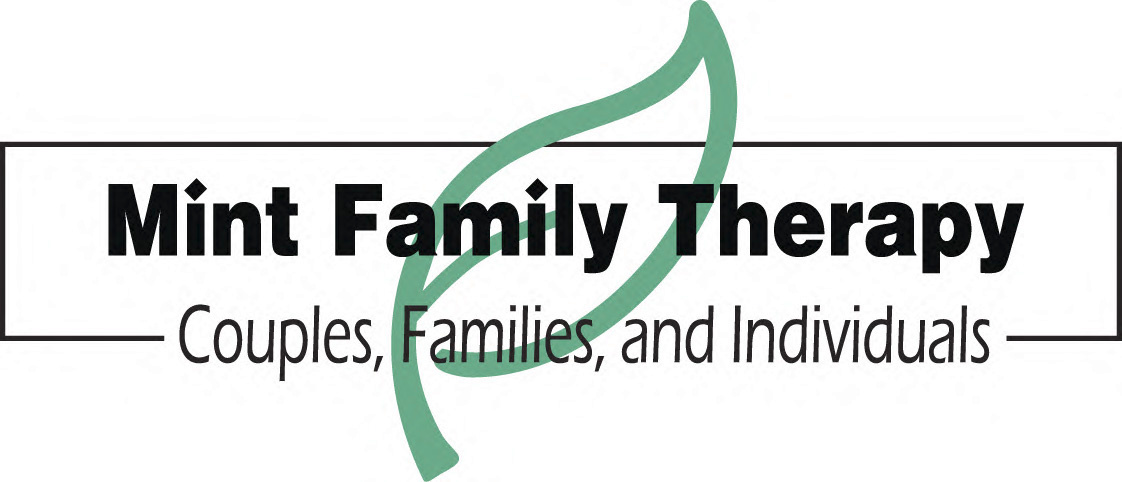Breaths Vs Anxiety
Breathing Less to Feel More: A Calmer Way to Manage Anxiety
By Kevin B. Smith, LMFT
Mint Family Therapy
What if the key to calming anxiety isn’t breathing more — but breathing less?
If you’ve struggled with anxiety, panic attacks, or even asthma, someone has probably told you to “take a deep breath.” But for many people, that advice doesn’t help. In fact, it can make things worse.
You might feel lightheaded, more panicked, or like you’re gasping for air. If that’s happened to you, you’re not doing it wrong — you’ve just been taught the wrong thing.
This blog will explain why over-breathing is often the real problem — and how learning to breathe less, not more, can create real calm and lasting regulation.
The Real Issue: Overbreathing and CO₂ Depletion
Anxiety changes how you breathe. Most people in anxious states unconsciously breathe too fast or too much, often through the mouth or upper chest. This is called chronic hyperventilation.
Here’s the issue: when you over-breathe, you exhale too much carbon dioxide (CO₂), and that’s a problem.
Why CO₂ matters:
CO₂ is not just a waste gas. You need it in your blood to help oxygen get delivered to your brain, heart, and muscles.
When CO₂ levels drop too low, oxygen delivery decreases, triggering symptoms like:
Dizziness
Racing heart
Chest tightness
Tingling
Panic
This is called the Bohr effect, the scientific process where too little CO₂ locks oxygen inside red blood cells, starving your tissues even when you’re breathing a lot.
This is why many people feel worse after taking deep breaths during a panic attack: the oxygen isn’t the problem. The lack of CO₂ is.
The Solution: Breathe Less — With Intention
Research from breathing experts like Dr. Konstantin Buteyko, Dr. Alicia Meuret, and Patrick McKeown shows that calmer, slower, nasal breathing is key to nervous system regulation.
Training the body to breathe less:
Improves CO₂ tolerance
Enhances oxygen delivery
Calms the vagus nerve
Reduces symptoms of anxiety, panic, asthma, and even high blood pressure
It’s not about holding your breath until you’re gasping — it’s about learning to soften and slow your breath in ways your body can tolerate and trust.
A Simple Starting Pattern: The 4–2–6–2 Breath
This gentle breathing rhythm can help lower anxiety and build respiratory resilience. Try it sitting or lying down:
Inhale through your nose for 4 seconds
Hold for 2 seconds
Exhale through your nose for 6 seconds
Hold after the exhale for 2 seconds
Repeat this cycle 5–10 times. You may feel a mild air hunger — this is your body learning to accept more CO₂ and stop bracing for danger.
If you feel lightheaded or uncomfortable, reduce the holds or simply breathe gently through your nose.
Age and Safety: How to Adjust Breathwork for Different Ages
Not every breathing rhythm is right for every body. Age, lung capacity, and emotional development matter. Below is a progression that works for clients of all ages, with starter and goal patterns for each group.
Ages 6–11 (Kids / Pre-Teens)
Starter Pattern:
Inhale 3 sec / Exhale 3 sec
→ No holds
→ Focus on nasal breathing and soft rhythmGoal Pattern:
Inhale 4 sec / Hold 1–2 sec / Exhale 5 sec
→ Used at bedtime or when calming down from a tantrum or test anxiety
Ages 12–17 (Teens & Young Athletes)
Starter Pattern:
Inhale 4 sec / Exhale 4 sec
→ Simple and safe for early training or calming nervesGoal Pattern:
Inhale 4 sec / Hold 2 sec / Exhale 6 sec / Hold 2 sec
→ Helps with focus, performance, anxiety, and recovery after effort
Adults (18+)
Starter Pattern:
Inhale 4 sec / Exhale 4–5 sec
→ Focus on nasal breathing and relaxing the shouldersGoal Pattern:
Inhale 4 sec / Hold 4 sec / Exhale 8 sec / Hold 4 sec
→ Builds CO₂ tolerance and down-regulates the nervous system
Older Adults or Those with Asthma, COPD, or Chronic Conditions
Starter Pattern:
Inhale 3 sec / Exhale 4 sec
→ No holds initially
→ Emphasis on nasal breathing and comfortGoal Pattern:
Inhale 3 sec / Hold 2 sec / Exhale 5–6 sec
→ Only add holds with medical clearance
→ Avoid air hunger or extended breath holds unless supervised
What This Teaches Your Body
When you practice breathing less with safety and control, you’re telling your nervous system:
“There is no threat here. You can settle now.”
Over time, your brain begins to predict calm instead of panic, and your breathing becomes your ally, not your enemy.
Professional Disclaimer
This blog is for educational purposes only and is not intended to diagnose or treat any medical condition.
Breathing exercises may not be appropriate for individuals with certain conditions, including (but not limited to) asthma, COPD, cardiovascular disease, panic disorder, or trauma histories. If you have a medical or psychological diagnosis, consult your healthcare provider before beginning any breathwork practice.
If you experience dizziness, tingling, shortness of breath, or panic during a breathing exercise, stop immediately and return to gentle, nasal breathing.
Final Thoughts
You don’t have to force your breath to feel better.
You don’t have to be perfect to find peace.
You just have to be willing to slow down, soften, and trust that your body can learn a new rhythm, one that doesn’t forecast danger, but presence.
At Mint Family Therapy, we help clients learn to feel safe again, from the inside out.
If you’d like support with anxiety, panic, asthma, or simply learning to breathe with ease, we’re here to help.

